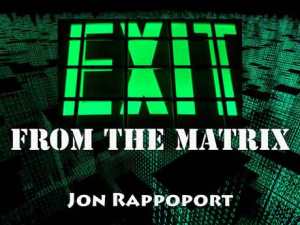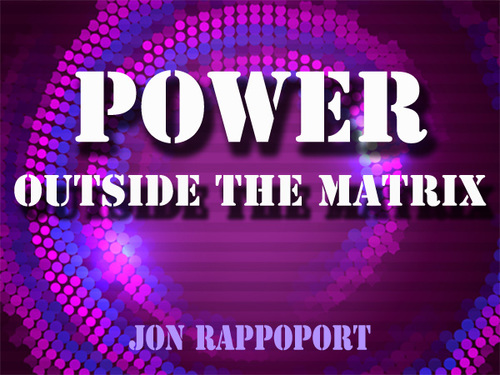Paranormal You: welcome back
by Jon Rappoport
May 27, 2014
Throughout the madness of what we call human history, people have always managed to make room for places where imagination can operate.
This operation isn’t about the normal avenues of emotional feedback. It isn’t about solving problems. It isn’t about staying faithful to standard beliefs. It isn’t about reflecting daily life.
It’s about something Beyond.
It doesn’t matter that most people consider these flights brief respites from the real business of living. It doesn’t matter that most people prefer to remain spectators. It doesn’t matter that most people deny their own imaginations have any true power.
It doesn’t matter that the works of artists have been co-opted, frozen, and recast as organized religions. It doesn’t matter that, time and time again, the work of artists has been stolen to assist control agendas.
Humans continue to make a place for something Beyond, in the hope that they can experience what they really are.
In my book, The Secret Behind Secret Societies (included as a bonus in Exit From The Matrix and Power Outside The Matrix), I recount my friendship with Richard Jenkins, an extraordinary healer, who worked with many people in New York, in the 1950s and early 60s.
Richard once wrote to me, “There you are in your apartment on Bleecker Street, painting night and day. You come up to my apartment to watch me work with patients, to find something different. I’m telling you that it’s the same thing. I hope you realize that. We’re in strange times, and they’re going to become stranger. People are organizing themselves as never before, on a much larger scale, all over the world. That’s the space of the future. Then there are other spaces, which very few people believe in. In those spaces, the most extraordinary things happen. This will be the choice that humanity makes as it creates its own fate. Live in the organized territory, or explore the other spaces. Dedicate yourself to one or the other. Don’t fool yourself with compromises. One day you’ll look back on our work together, and you’ll either cherish it or you’ll think of it as a momentary illusion…”
1960. First day of rehearsal for a college play, The Lower Depths. I walk out on the stage and look around. It’s quiet, but inside I feel thunder. Everything is different. New shining space. I start smiling. Without knowing it, I’ve been waiting for this moment for God knows how long. A place apart. A world where imagination takes on flesh and comes to life.
The theater director, Walt Boughton, is leaning against a wall. He looks at me. He sees and he knows. He nods. His message is clear: That’s right, my boy, you’re here, this is it, nothing will ever be the same…
We live in a society where consumers can pick and choose among thousands of narratives about themselves, their lives, their future, their duties, their needs, their status—all happening in the consensus organized space.
Awhile back, I wrote about a new Pentagon/DARPA project aimed at studying brain signals, in real time, to understand how and why people buy some narratives and reject others.
A common feature of most narratives is: limited life, limited power.
Or to put it another way, limited access to larger aspects of Self.
The trick of narratives, as retired propaganda master, Ellis Medavoy, once told me, is: built-in limitation; it looks like “desire fulfilled”; it looks like happiness.
But it isn’t.
And when people find that out, they experience buyer’s remorse.
“Why did I think that narrative described what I wanted? Why did I think it would make me satisfied?”
The space-continuum in which we live has its own narratives. They hang from it like barnacles. The gist? You can’t get out. There is nothing to get to.
Again, I refer to the brilliant hypnotherapist, Jack True, whom I interview 43 times in my collection, The Matrix Reveled. Jack did sessions with patients that went directly at the space-time matrix.
“Under hypnosis,” he said, “I had people look at the continuum and tell me what they saw. I had them describe it in their own way. Then I asked them to look outside it.”
The material from those sessions is extraordinary, in several respects. It helped me, when I was researching my companion collection, Exit From The Matrix.
Some of Jacks’ patients came “back around the barn,” as Jack characterized it, and ended up relating what sounded like dreams, dreams they would have while asleep. The narrative wasn’t smooth, it wasn’t moving from beginning to end. It was asymmetrical, just as in dreams, where the scenery shifts, where one event ends in midstream and another pops up, where the “plot line” dissolves…and a new plot takes over.
Several of Jack’s patients said their encounters outside the space-time continuum felt very familiar—as if they’d been there before.
Jack: “One patient said he found himself in a dim hall. It was very large. People were talking, but he couldn’t see them. A single voice took over, and a character stepped out of the shadows. He told the patient this was one of a great number of places outside ordinary space-time. He said there was no reason to consider this ‘visit’ strange or unusual. On the contrary, life inside space-time was unusual…”
There are millions and millions of narratives that are used to convince people that life inside this space-time is It, is all there is, is normal…
And normalcy is the key. That’s the icon, the symbol, the header, the trance-inducer. What is normal seals the deal. It labels what is allowed to be experienced. It tells people what is not allowed to be experienced.
These narratives about normalcy hold people inside the gates, and provide boundaries for Self. “Self can’t get any bigger than this.”
In the early 1960s, I was teaching at a private school in West Los Angeles.
These kids in our small private school were all rejects from the public system, or from other private schools. They couldn’t make it there. Many of them were what the psychologists called “acting out.”
I’d have to write a few hundred pages just to begin giving you the flavor of what it was like to deal with 15 or 20 of them, at once, in a classroom. It wasn’t about teaching content, believe me. It was about me surviving.
But at bottom, every one of those kids was, in his/her own highly idiosyncratic way, Not-Normal. That’s all. And what was driving them completely bat-crazy was, no one would deal with them on their own terms.
Everyone was trying to fix them. Everyone was feeding them narratives about “normal, fitting in.”
One day, out of desperation, I changed all that. In my classes, we worked up improvised sketches. Theater. No plot, no direction, no narrative, just off-the-cuff dreamtime in the moment and lots of roles, some of which they were already playing every day to a dead audience of teachers. But it wasn’t dead now. They had me and they had each other.
They jumped at the chance. They didn’t need any direction or instruction. It was as if they’d been waiting all their lives for someone to say, “Just perform what you’re already performing.”
They were actors. That’s what they’d been trying to tell adults.
And everything fell into place. They loved it, I loved it, we all offloaded a few tons of stress and a whole lot of insane normalcy…and then they calmed down. Not because there was a strict rule about behavior, but because they had escaped the tyranny of Is. And Has To Be. And Must. And Normal.
That day, the space-time of the continuum, in that classroom, went away. It disintegrated. What took its place was an island of joy. Which is to say, what sits outside this matrix is more real than real. When you find it.
It doesn’t have to be spooky.
It’s Magic Theater.
Sit down some time with a bunch of real stage actors and ask them when they feel most alive. A certain percentage of them will confess it’s when they’re on the boards, performing a role. That’s when they feel most like themselves, even though they’re pretending to be somebody else. That’s when the day-to-day space-time continuum goes away and new one comes into being.
That’s when normal steps aside and paranormal makes its entrance.
A fake space, a repressed space, a continuum of frustration vanishes.
Conventional standards don’t explain what is happening. They can’t.
Life. Theater. Theatricality. Roles played to the hilt. The Paranormal.
There is no single narrative for a human being. Sometimes the stage is dead, the lights are off, the seats are empty. But then we get a glimpse of something else. We walk up on the stage and feel that space and realize the old walls are gone and this is it, and we’re ready, and the energy comes out of nowhere and we do things we thought were impossible.
Normal disintegrates.
This is art. This is a level of life that is waiting for all of us. And whether we admit or not, we’ve been waiting for it, too.
Jon Rappoport
The author of three explosive collections, THE MATRIX REVEALED, EXIT FROM THE MATRIX, and POWER OUTSIDE THE MATRIX, Jon was a candidate for a US Congressional seat in the 29th District of California. He maintains a consulting practice for private clients, the purpose of which is the expansion of personal creative power. Nominated for a Pulitzer Prize, he has worked as an investigative reporter for 30 years, writing articles on politics, medicine, and health for CBS Healthwatch, LA Weekly, Spin Magazine, Stern, and other newspapers and magazines in the US and Europe. Jon has delivered lectures and seminars on global politics, health, logic, and creative power to audiences around the world. You can sign up for his free emails at www.nomorefakenews.com


